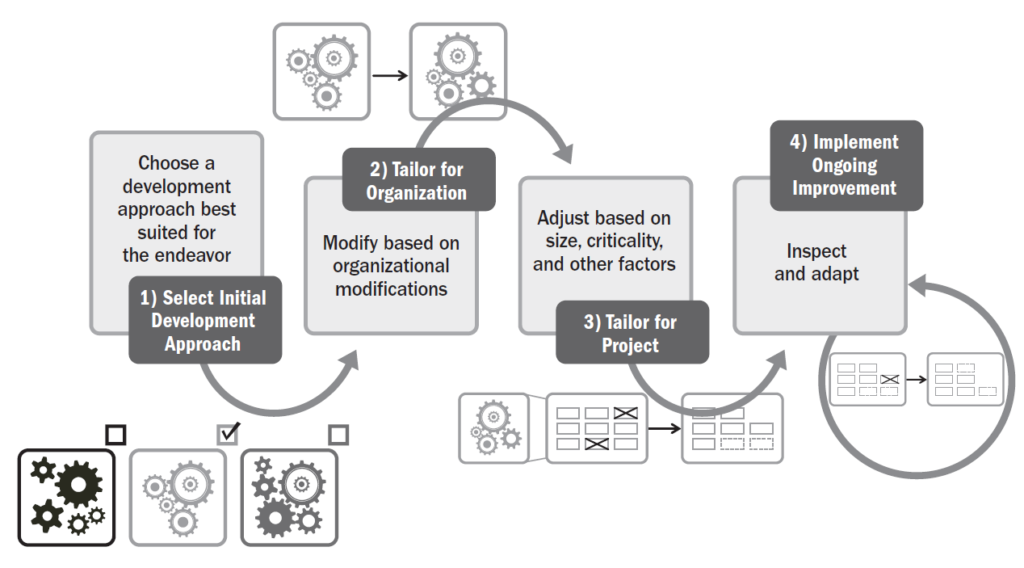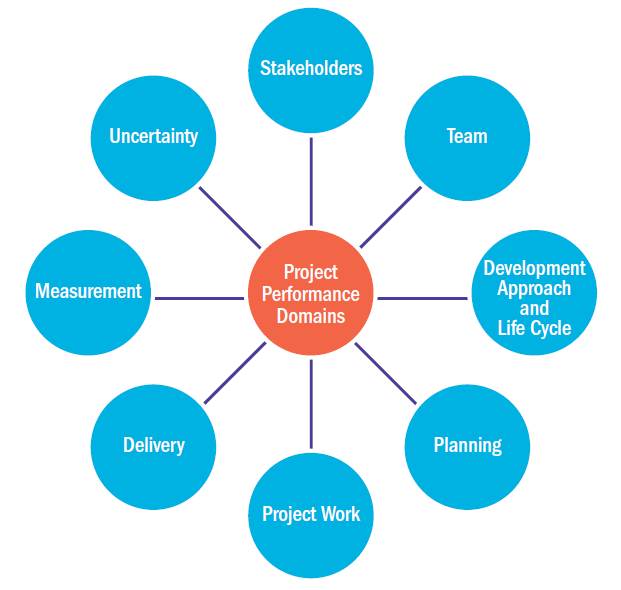Tailoring the Performance Domains – Measurement
Adapting How We Track Success in Projects for Greater Accuracy and Value
In today’s diverse and ever-evolving project environments, a one-size-fits-all approach to measurement simply doesn’t work. Projects vary in size, complexity, industry, methodology, and stakeholder expectations—making it essential to tailor the Measurement Performance Domain to suit each project’s unique characteristics.
According to the PMBOK® Guide – Seventh Edition, the Measurement Performance Domain focuses on evaluating project performance and progress, enabling informed decision-making and ensuring alignment with desired outcomes. Tailoring this domain means adjusting what is measured, how it is measured, and how performance data is interpreted and communicated.
In this blog, we will explore what the Measurement Performance Domain entails, why tailoring it is essential, and how to apply tailored measurement strategies in your project environments effectively.
What is the Measurement Performance Domain?
The Measurement Performance Domain encompasses the processes, tools, indicators, and techniques used to assess project progress, outcomes, value, and performance. It includes:
- Metrics and KPIs (Key Performance Indicators)
- Data Collection and Reporting
- Earned Value Management (EVM)
- Forecasting Techniques
- Qualitative and Quantitative Assessments
- Performance Reviews and Dashboards
Measurement helps stakeholders answer critical questions:
- Are we on track?
- Are we delivering value?
- Are our resources being used effectively?
- Are we aligned with strategic goals?
But these questions—and their answers—may differ from project to project, which is why tailoring is key.
Why Tailor the Measurement Domain?
Tailoring the Measurement domain means adapting what to measure, when to measure, how to measure, and how to report based on the specific project context. Here’s why this is crucial:
1. Not All Metrics Matter Equally
Some projects require precise cost and schedule tracking (e.g., infrastructure projects), while others (like R&D or innovation initiatives) focus more on learning, adaptability, and stakeholder feedback.
2. Different Stakeholders Need Different Information
Executives may want high-level dashboards. Project teams may need detailed task breakdowns. Clients might only care about deliverable status and timeline.
3. Approach-Based Differences
Agile teams may emphasize velocity and cycle time. Waterfall projects may focus on baseline variance and milestone tracking. Hybrid models require a combination.
4. Organizational Maturity Varies
Some organizations have mature PMO systems and tools; others rely on manual tracking or informal updates. Measurement strategies should reflect this maturity.
Tailoring Guidelines for the Measurement Performance Domain
Let’s explore specific tailoring strategies across various dimensions of project measurement.
1. Tailor Based on Development Approach
Your chosen project development approach will directly influence measurement practices.
- Predictive/Waterfall Projects:
- Use earned value management (EVM)
- Rely on baseline vs. actual comparisons
- Track cost performance index (CPI), schedule performance index (SPI), and variances
- Agile Projects:
- Measure velocity, sprint burndown, lead time, cycle time
- Track team throughput and work-in-progress (WIP)
- Conduct regular reviews and adapt based on feedback
- Hybrid Projects:
- Combine agile team metrics with milestone and budget tracking at the portfolio level
Tailoring Tip: Don’t try to force traditional KPIs on agile teams or agile metrics on traditional projects. Match the approach with compatible metrics.
2. Choose Relevant Metrics and KPIs
Select performance indicators that reflect your project’s goals and success criteria.
- For a customer-facing software project, measure:
- User satisfaction
- Bug fix turnaround time
- Uptime or performance metrics
- For a construction project, measure:
- Cost and time variances
- Resource utilization
- Safety incidents
- For a digital marketing campaign project:
- Conversion rates
- Engagement rates
- Cost-per-click (CPC)
Tailoring Tip: Involve stakeholders early to identify which metrics they value and make those part of your tracking dashboard.
3. Customize Data Collection Methods
The method of collecting measurement data should match your project scale and complexity.
- Small projects: Use spreadsheets, manual logs, or simple time-tracking tools.
- Large projects: Use enterprise project management systems like Microsoft Project, Jira, Trello (for Agile), or custom dashboards.
- Complex portfolios: Integrate data from multiple tools into centralized dashboards using Power BI, Tableau, or similar tools.
Tailoring Tip: Avoid overcomplicating data collection. Simplify and automate wherever possible to reduce the burden on project teams.
4. Adapt Reporting Cadence and Format
How often you report and in what format should depend on stakeholder needs and the speed of project execution.
- Fast-paced projects: Require frequent, lightweight reports (daily or weekly) in visual formats.
- Long-duration projects: Benefit from detailed monthly or quarterly reports.
- Executive stakeholders: Prefer summary dashboards and visual highlights.
- Team-level stakeholders: May need detailed task status and effort logs.
Tailoring Tip: Set clear expectations on reporting formats and frequencies during the project kickoff to avoid misalignment later.
5. Incorporate Qualitative Measurement
Not all valuable data is numerical. Tailor your performance assessments to include qualitative elements such as:
- Stakeholder feedback
- Lessons learned
- Team morale and satisfaction
- Customer experience reviews
Tailoring Tip: Use surveys, retrospectives, and interviews to gather soft data that can provide critical context for hard numbers.
6. Use Measurement to Drive Value, Not Just Track Progress
Don’t just measure for the sake of it. Use performance data to improve decisions, optimize processes, and increase value delivery.
- Highlight trends and early warning signs
- Identify areas for innovation or change
- Adjust resources based on actual performance
- Re-prioritize tasks based on stakeholder impact
Tailoring Tip: Create a feedback loop from measurement to decision-making. Ensure metrics inform real-time adjustments, not just end-of-project analysis.
Case Study: Tailoring Measurement in a Hybrid IT Project
Imagine a company launching a new web application using a hybrid development approach. The backend is built using predictive methods, while the front end is developed iteratively.
Tailored Measurement Strategy:
- Back-End Team:
- Track scope completion vs. schedule using EVM
- Monitor budget burn rate and cost variances
- Front-End Team:
- Track sprint velocity, defect density, and user feedback
- Use burndown charts and lead time metrics
- Executive Dashboard:
- Combined view of milestones, budget status, release readiness, and customer satisfaction trends
- Customer Reports:
- Bi-weekly updates with demos and usability scores
This tailored approach ensures that each team operates with metrics that reflect their context while providing leadership with an integrated view of overall project health.
Common Pitfalls to Avoid
When tailoring the Measurement domain, avoid these mistakes:
- Over-measuring: Too many metrics can overwhelm teams and dilute focus.
- Misaligned metrics: Measuring things that don’t align with project goals or stakeholder values.
- Static measurement systems: Failing to evolve your measurement strategy as the project changes.
- Poor communication of results: Even good data loses value if it’s not communicated effectively.
Conclusion
Tailoring the Measurement Performance Domain is about more than choosing metrics—it’s about aligning your measurement strategy with the project’s goals, stakeholders, complexity, and execution approach. Done right, tailored measurement provides clear, actionable insights that lead to better decisions, more efficient execution, and greater value delivery.
In the dynamic world of project management, success depends not only on what you deliver but also on how well you understand and communicate what success looks like. And for that, your measurement strategy must be tailored—thoughtfully, deliberately, and continuously.



